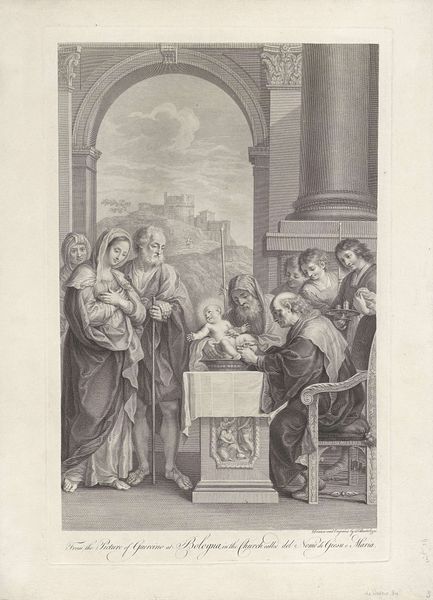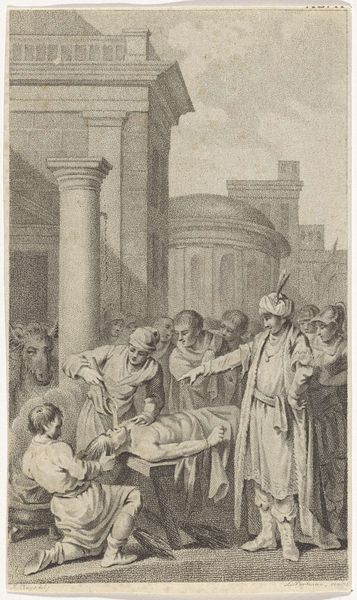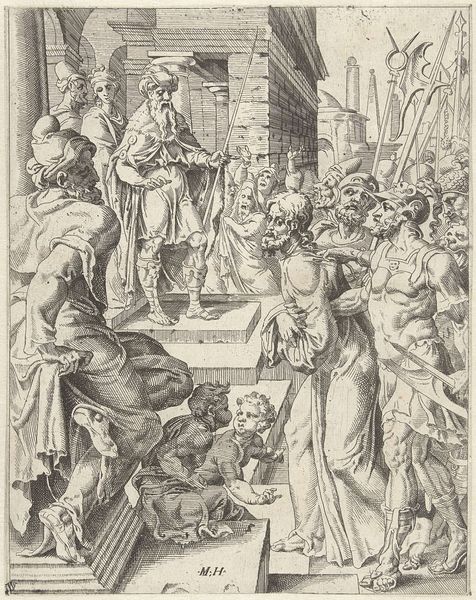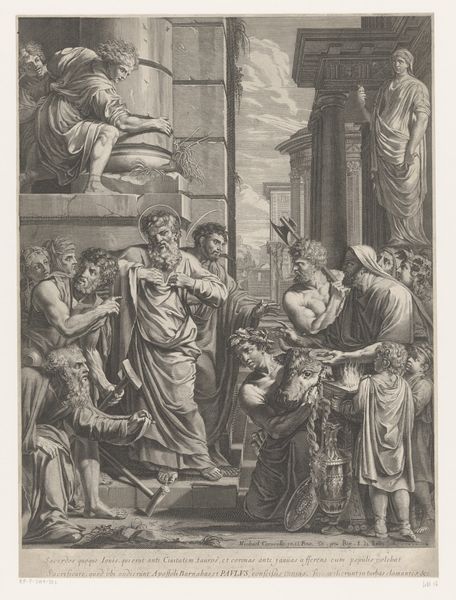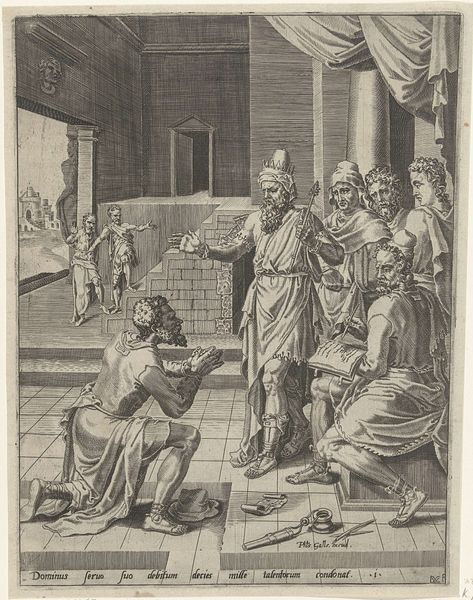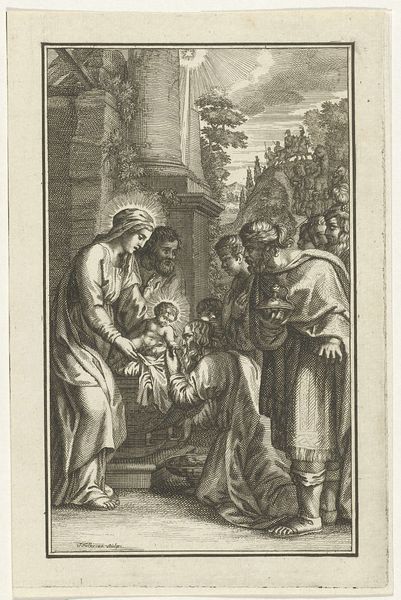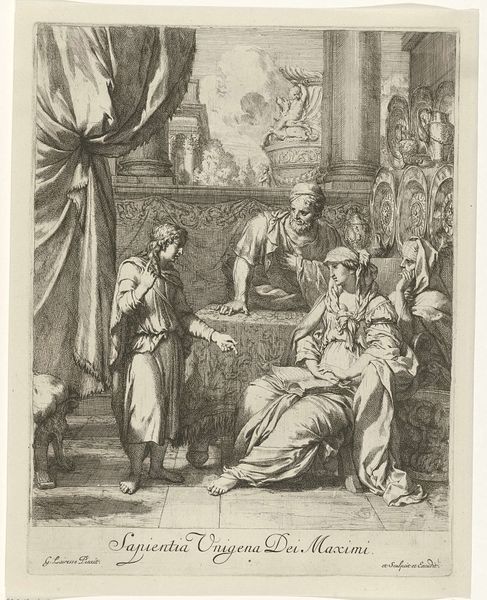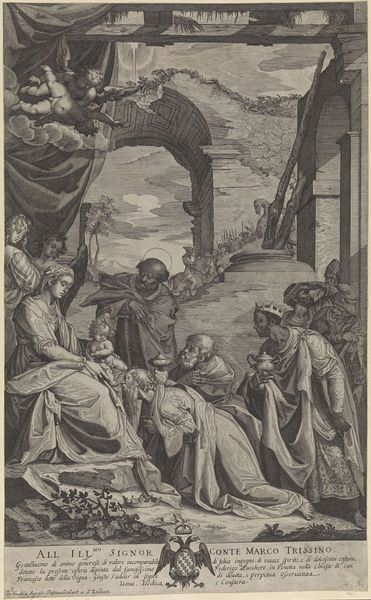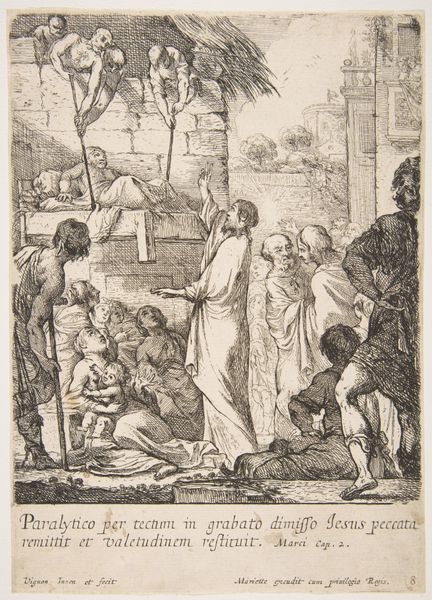
print, engraving
#
narrative-art
#
baroque
# print
#
old engraving style
#
landscape
#
figuration
#
line
#
history-painting
#
academic-art
#
engraving
Dimensions: height 428 mm, width 309 mm
Copyright: Rijks Museum: Open Domain
Curator: The piece before us, held in the Rijksmuseum, is an engraving from 1737 by Pieter Tanjé titled "Lucius Papirius vergeeft Fabius Maximus." Editor: My initial impression is one of classical solemnity, mediated by the starkness of the engraved lines. The monochrome palette emphasizes form and gesture, though I find myself drawn more to the dynamic grouping on the left, near the bottom of the print, rather than the seated figure. Curator: Precisely! Tanjé masterfully employs line to capture the narrative, depicting the moment when Lucius Papirius, despite his authority and youth, forgives the elder Fabius Maximus. We see it staged as a grand historical painting, an instance reflecting themes of power, forgiveness, and civic duty, and it speaks volumes about the values upheld during its time. Editor: Indeed. Look closely at the composition. Tanjé has positioned the figures carefully, leading the eye from the forgiveness scene up to the imposing architecture in the background. It’s an essay in contrasts—the stoicism of the seated figures balanced against the implied bustle of the figures along the ground, each meticulously rendered to give us clues as to their social class and station within Roman society. The artist clearly wants us to think about the interplay between individual agency and the larger structures of authority at play here. Curator: Absolutely, and in the 18th century, such a narrative would be laden with contemporary significance. It encourages a discourse on leadership and moral responsibility, particularly relevant in the context of burgeoning Enlightenment ideals and shifts in societal power structures. Who is really in power in the frame here, Papirius or Fabius? Or the State? Editor: Consider how Tanjé handles the varying textures: the smooth marble of the building facade contrasts with the draping of their robes, achieved solely through skillful hatching. This careful attention to detail contributes to a sense of depth and realism. Also, have you considered the function of space in the work, Curator? Note the careful division of pictorial space—a literal architecture of composition. Curator: Yes, it brings to life the intersection of personal and public morality. It reminds us that historical artworks are often mirrors reflecting the social anxieties and moral debates of their own eras, inviting us to engage in critical dialogues on contemporary values. The placement of power, social responsibility, justice, what else do you find when deconstructing this image? Editor: Overall, beyond the overt narrative, there is a mastery of line and form that allows Tanjé to explore deeper formal relationships. Curator: It is always about what is beneath the image that elevates these stories and allows them to continue to be told and be heard, even hundreds of years later.
Comments
No comments
Be the first to comment and join the conversation on the ultimate creative platform.
